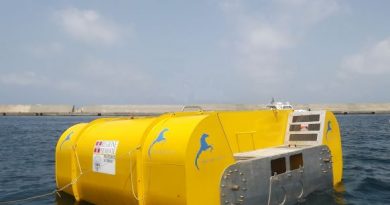India to auction 40 GW renewables every year for the next 10 years

India will auction off a minimum of 30 GW in solar and 10 GW in wind energy until 2028, confirmed the New and Renewable Energy Secretary Anand Kumar. In other words, considering the existing capacity of 70 GW on the ground, over 90% of India’s renewable capacity is yet to be made.
The annual auctions of nearly 40 GW of renewable energy indicate the huge potential for domestic manufacturers and developers who will benefit from enough projects and hopefully a stable and predictable policy regime over the next decade and even beyond that. “We have 30 GW solar energy bidding plan for 2018-19 and 2019-20. This 30 GW auction per annum would continue till 2028. Similarly, we have to auction 10 GW of wind energy for next 10 years till 2028 to meet the power demand of 862 GW by 2030,” Kumar told reporters at the Global Wind Day celebration organised by the Indian Wind Turbine Manufacturers Association (IWTMA).
He further added, “We have to do 350 GW in solar (to meet demand by 2030), of which 100 GW is planned till 2022. So we have to bid out at least 30 GW each year from 2020 onwards to achieve additional 250 GW.”
Based on the government’s power projections and targets set for 2030, nearly 140 GW of wind energy based projects need to be auctioned off in the coming years to meet those targets and an estimated 60 GW in wind energy needs to be put out by the turn of this decade. If expected power projections are met India would ultimately have around 500 GW of renewable energy capacity by 2030, including 350 GW of solar and 140 GW of wind energy. A somewhat surprising number considering the potential for biofuels and power from waste.
Kumar further said, “Therefore, we have to do 10 GW every year till 2028 to meet the overall power demand of 862 GW by 2030. India has already achieved 70 GW of renewable energy capacity including 22 GW of solar and 34 GW of wind.” Put another way, 90% of India’s renewable capacity for 2030 is still to be made.
The Central Electricity Authority and other government agencies have worked out a demand projection of 862 GW by 2030 factoring in 6 per cent growth in electricity demand per annum. These projects will be auctioned off using the closed envelope auction or reverse bidding method once a detailed analysis from IIM Lucknow can confirm its viability and success rate for manufacturers and developers big and small. The final call will be taken only after a successful report which will be handed in by July 2018.
Kumar explained that some players had expressed concerns that the bidders with deep pockets can hurt small developers by outbidding them in auctions for renewable projects. Softbank Energy, for instance, has already made some noises about wanting to invest $100 billion. However, he also admitted that tariff-based reverse auction helps in achieving the best pricing. Under the close envelop auctions, the bid price cannot be changed whereas in reverse auction, the bid price is known and bidders can outbid the other. This method will hopefully garner a level playing field for all interested parties as well as a decent tariff rate for the government.
copyright:iamrenew.com




